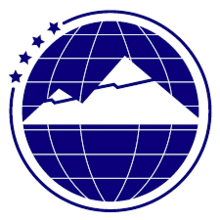Armenian Assembly of America
 From Wikipedia - Reading time: 5 min
From Wikipedia - Reading time: 5 min

The Armenian Assembly of America is the largest Washington-based nationwide organization promoting public understanding and awareness of Armenian issues. The organization aims to "strengthen United States/Armenia relations, promote Armenia's democratic development and economic prosperity, and seeks universal affirmation of the Armenian genocide" via "research, education and advocacy."[1]
History
[edit]In the early 1970's, Armenian-Americans decided to create an organization, headquartered in Washington, D.C., to represent and promote Armenian interests. With Armenian-American community members across the country, they launched the Armenian Assembly in 1972. Ultimately, the coalition did not hold, but in its place was born a non-partisan organization dedicated to promoting public understanding and awareness of Armenian issues.
The Assembly would go on to launch a broad array of programs and initiatives and firmly establish itself as an Armenian voice within U.S. public policy circles. It would pioneer initiatives to commemorate and reaffirm the Armenian genocide. And as early as 1977, the Assembly would introduce a summer intern program in Washington, DC that, some 32 years later, could claim more than 900 graduates.
Beginning in 1988 and thereafter, the Assembly addressed the unprecedented challenges of the 1988 Armenian earthquake, the Nagorno-Karabakh conflict and Armenia's independence movement.
With Administration support, the United States Congress mandated first-ever earthquake relief funding to then Soviet Armenia. Annual U.S. assistance became the norm, the next ten years totaling more than $1.4 billion. The Assembly was also instrumental in encouraging our friends in Congress to form a Congressional Caucus on Armenian Issues.[2] It would become one of the largest caucuses, working side-by-side with the Assembly in supporting Armenian-American interests.
The Armenia Tree Project (ATP)[3] was established in 1993 to assist the Armenian people in using trees to advance their social, economic and environmental recovery. Some 300,000 plantings later, ATP's vision continues to bloom throughout Armenia and Artsakh.
Efforts also continued unabated to secure universal reaffirmation of the Armenian genocide, enhanced significantly in 1997 with the launch of the Assembly's Armenian National Institute (ANI).[4] ANI is at the forefront of efforts to affirm the Armenian genocide, responding to denial and advance knowledge and understanding of the Genocide and its consequences.
Completing three decades of non-partisan service, the Assembly family of organizations remains in the forefront of strengthening the U.S./Armenia and U.S./Artsakh relationships.
NGO Training and Resource Center
[edit]In April 1994, the Armenian Assembly of America established the NGO Training and Resource Center with support from the "Save the Children" USAID fund. The center aims to strengthen domestic Armenian Non-Governmental Organizations (NGOs) in hopes of encouraging wider participation in the democratic processes. The center provides, to more than 300 local registered NGOs, the following services:[5]
- ten-week training program focusing on the leadership and management of the organization;
- technical assistance to help participants implement change within their organization;
- public relations department to raise public awareness about NGO Sector in Armenia and to promote their activities and projects;
- seminar/workshop series.
Spending
[edit]According to OpenSecrets.org,[6] the Armenian Assembly of America allocated the following sums to its lobbying activities:
- 2000 - $270,000
- 2001 - $240,000
- 2002 - $140,000
- 2003 - $180,000
- 2004 - $220,000
- 2005 - $220,000
- 2006 - $180,000
- 2007 - $320,000
See also
[edit]- Armenia–United States relations
- Armenian American Political Action Committee
- Armenian-American
- Armenian Diaspora
- Armenian lobby in the United States
- Armenian National Committee of America
- List of Armenian-Americans
- Little Armenia, Los Angeles, California
References
[edit]- ^ "About Us". Official site. Retrieved 2008-08-25.
- ^ "Congressional Caucus on Armenian Issues". Armenian Assembly of America.
- ^ "Armenia Tree Project – Home page". Archived from the original on 2006-12-24.
- ^ "Armenian National Institute – Home page".
- ^ "Armenian Assembly of America". Civil Society International. April 2001. Archived from the original on 2008-10-23. Retrieved 2008-08-25.
- ^ "Armenian Assembly of America". Lobbying Spending Database. OpenSecrets.org. Archived from the original on 2012-09-07. Retrieved 2008-08-25.
 KSF
KSF